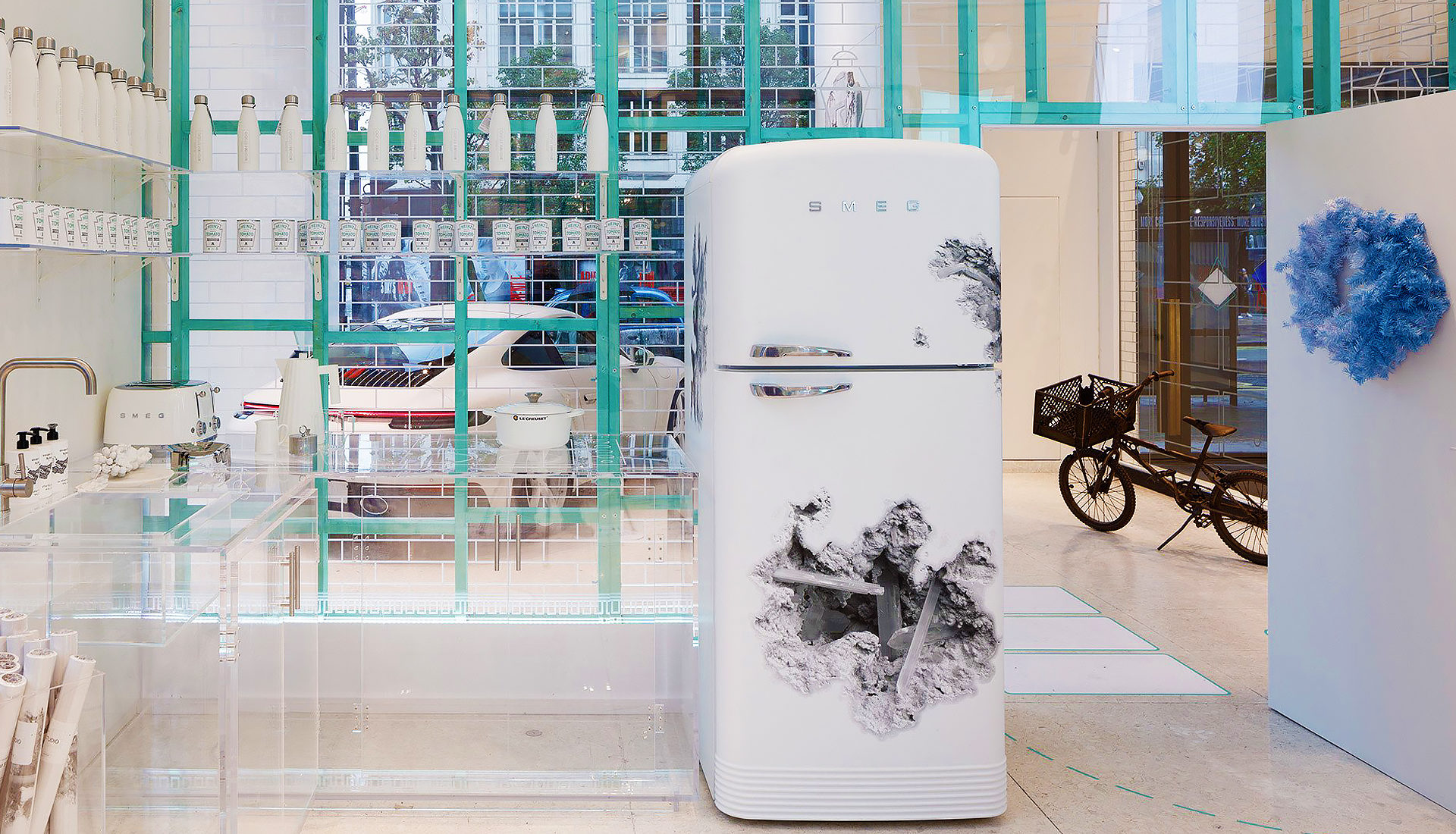NYC-based artist Daniel Arsham has taken over Selfridges’ Corner Shop for an instillation-meets-shopping project as part of the iconic London department store’s three month long ‘future fantasy’ creative campaign.
Wandering along Oxford Street today, I stumbled upon the window display in Selfridges, London’s most famous department store. A white, eroded porche 992 with custom plates reading ARSHAM 3019, a tin of Heinz cream tomato soup that you can buy for £1.50 and even a basketball hoop greets onlookers, drawing them in to the store.
This is part of an art instillation titled ‘The House by Daniel Arsham,’ which reimagines a typical family home in the distant future of 2019 and an example of a new tactic being used by retailers to attract shoppers. Experiential shopping is the method, aiming to provide a more interesting and interactive experience for those who prefer browsing online. An art exhibition and shopping experience at the same time? Count me in.
In recent years, shopping has undergone a dramatic transformation and within the next decade it could change from the simple act of buying into an activity driven entirely by interactive technology and experiences. Responding to the growth of digital shopping, the rise in so-called ‘experiential shopping’ is a new way for brands to reach consumers that may otherwise choose to browse online.
Think pop-up shops on steroids. Stores that confront visitors with fun things to see and do rather than pushing a sale on them the minute they walk through the door. ‘The way in which we are able to have our visitors physically, tangibly, sensually engage with brands has a return on investment that no ad could ever come close to,’ says Maryellis Bunn who designed the Museum of Ice Cream in America.
It’s unsurprising that experience drives sales and many companies are moving towards embracing it – including those at Selfridges. The space showcases a combination of Arsham’s artwork as well as more affordable products for potential buyers and is also the latest example of his involvement with a retailer, arriving directly after his runway design for Dior during Paris Fashion Week.


‘A lot of my work is often trying to find areas to show and engage the public that are not typical art viewing spaces,’ said Arsham. ‘All the collaborations I’ve done, anything related to retail, would be that. And this is one of the most interesting retail experiences globally.’




















